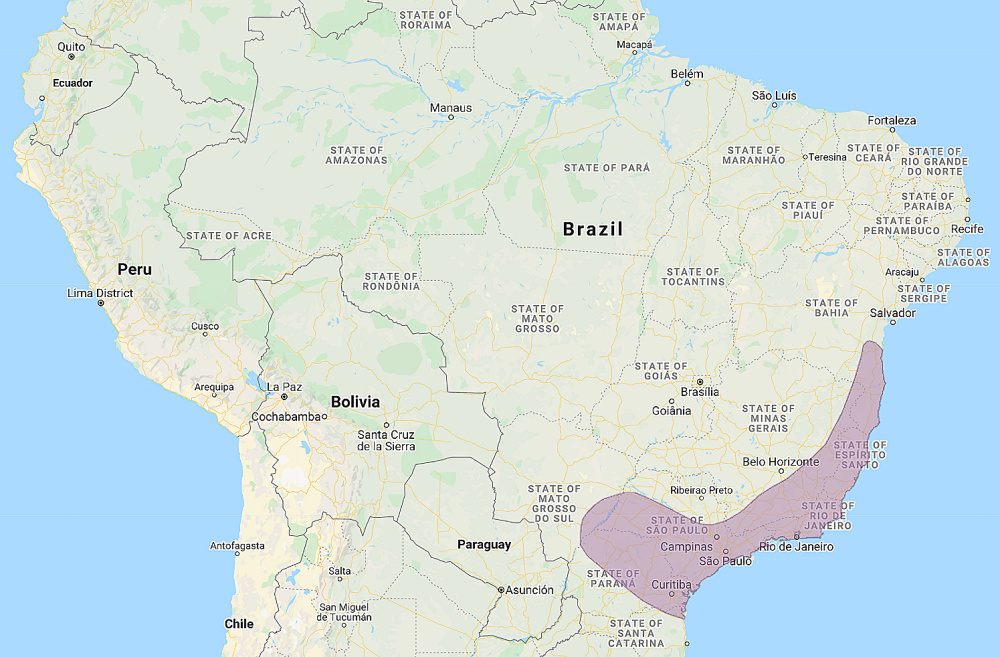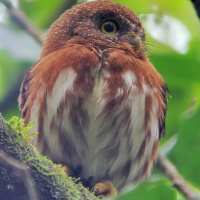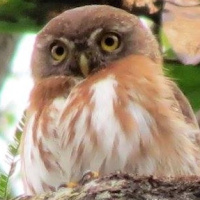Introduction
The Least Pygmy Owl is a tiny owl with a rounded head and no ear tufts. It is also known as the East Brazilian Pygmy Owl.
Photo Gallery (3 pictures)
Sound Gallery
Information
Description: The facial disc is pale greyish-brown with some indistinct rufous concentric lines. Eyebrows are whitish, while the eyes are
yellow. The cere is yellowish-grey and the bill yellowish-horn with a slight greenish tint. The crown and upperparts are dusky cinnamon-brown to warm brown,
with the crown having tiny whitish flecks and the nape with prominent fake eye-spots (occipital face). The mantle and back are plain warm brown, and the
wing-coverts have some pale speckles.
Flight feathers are dark brown, with whitish spots on each web, forming pale bars across the opened wing. The wing near the wrist is whitish below. The tail is
dark brown with 3-4 visible broken bars of relatively large, whitish spots.
There is a rounded whitish area around the throat, bordered above by a narrow rufous band, and on the sides by rufous-brown mottling forming patches with a
few pale spots. The rest of the underparts are off-white with buffish-rufous streaking on the flanks.The tarsi are feathered, and the toes are bristled and
yellowish. Claws are horn with darker tips.
Size: Length 14-15cm. Wing length 85-91mm. Tail length 49-54mm. Weight around 50g. Females are heavier than males.
Habits: The Least Pygmy Owl is partly diurnal, but most active at dusk and dawn.
Voice: The song of the male is a high, hollow double note, somewhat drawn out and repeated at intervals of several seconds - hew-hew, hew-hew, hew-hew...
Hunting & Food: Feeds mainly on insects, but also takes small vertebrates.
Breeding: The breeding habits of the Least Pygmy Owl are little known. Likely nests in abandoned holes of woodpeckers in tree trunks and larger branches.
Habitat: Evergreen rainforest and forest edge with a preference for primary forest, in tropical and subtropical climates. Ranges from sea-level up to 800m elevation in southeast Brazil, reportedly up to 1000m in other areas.
Distribution: East Brazil from southeast Bahia south to Santa Catarina, west to Minas Gerais, south Mato Grosso, and Paraná.

Range of the Least Pygmy Owl Glaucidium minutissimum
Status: Locally not rare in region between Rio de Janeiro and Santa Catarina. Probably threatened by deforestation. Listed as 'Least Concern' by Birdlife International.
Original Description: Wied-Neuwied, Prinzen zu Maximilian. 1830. Beiträge zur Naturgeschichte von Brasilien, 3, p. 242.





